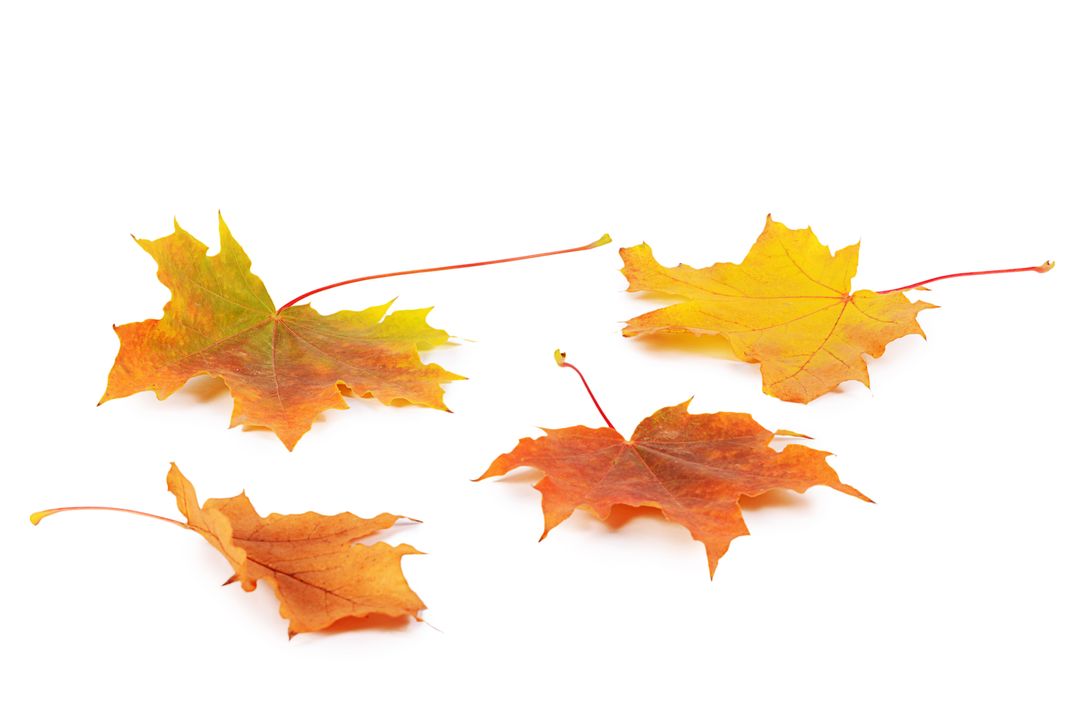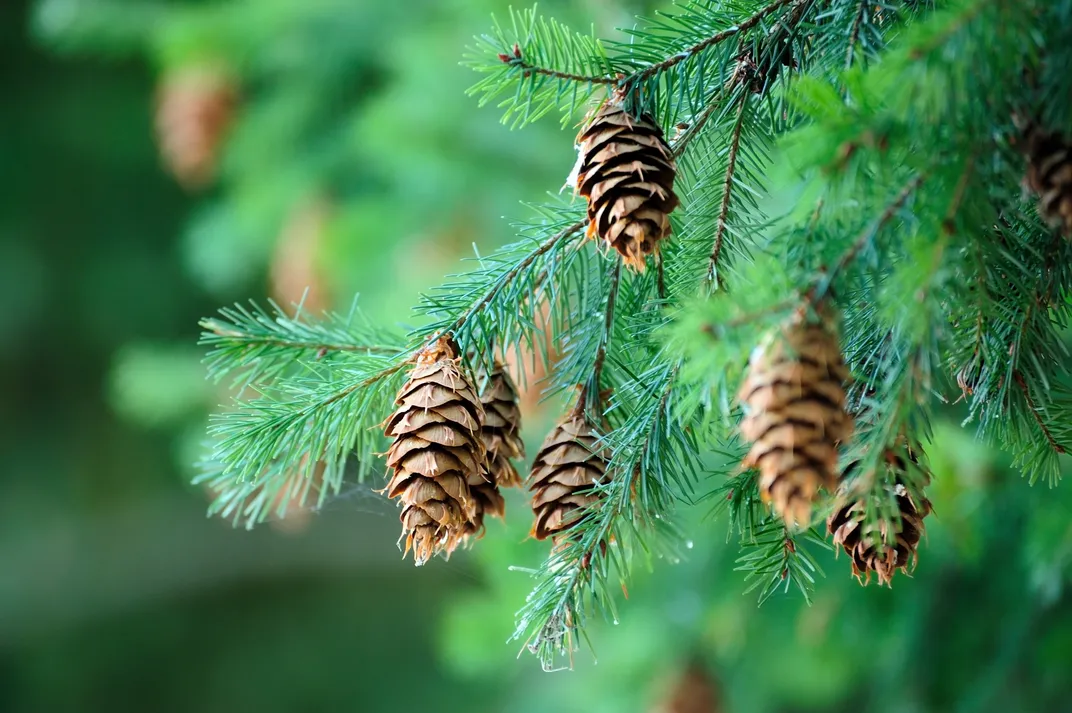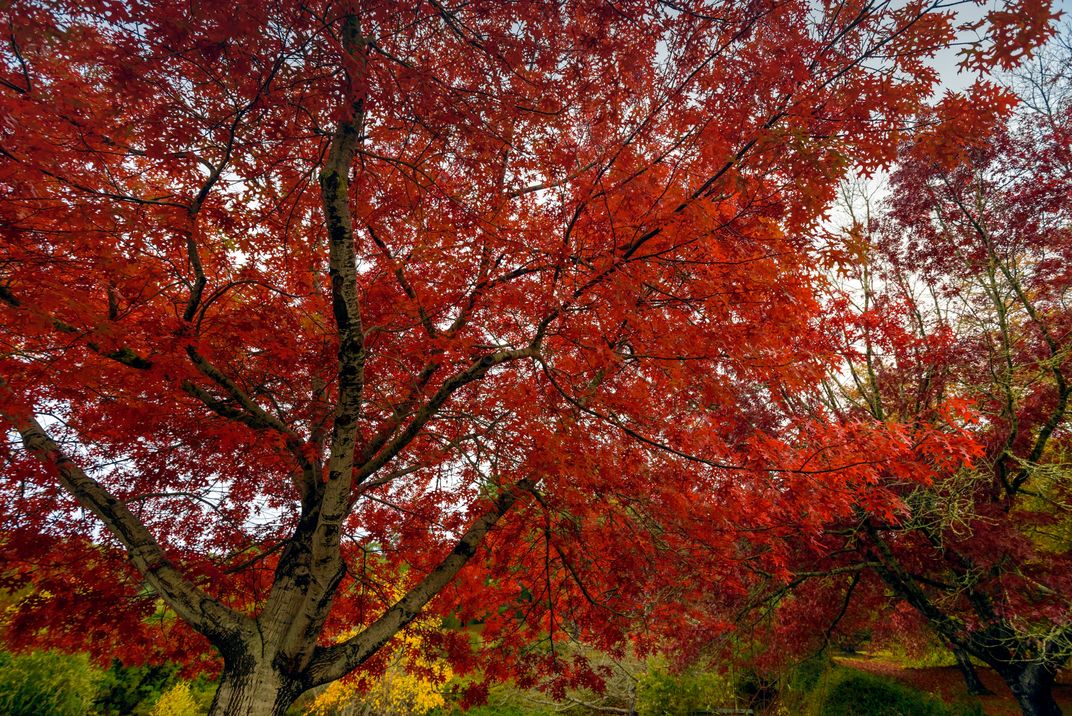SMITHSONIAN SCIENCE EDUCATION CENTER
Why Do Leaves Change Color in the Fall?
Have you ever thought that the leaves changing color was the first sign of autumn? Actually, other factors trigger the leaves to change color!
/https://tf-cmsv2-smithsonianmag-media.s3.amazonaws.com/blogging/featured/ThinkstockPhotos-518679112.jpg)
What is your favorite thing to do in autumn? Go on a hayride? Walk through a pumpkin patch or an apple orchard? Watch leaves dance around you?
Autumn is a beautiful and fun season for all ages. We can observe a lot of changes in autumn—the air becomes crisp, the evenings grow longer, and leaves’ dazzling colors emerge. We know autumn is here when the bright green summer landscape changes to reveal brilliant reds, oranges, yellows, and golds. But leaves are not on trees just to make them pretty. Trees need leaves to keep them alive!
Leaf or Needle?
Not all trees have leaves that change color and fall off. Trees that go through that cycle are deciduous. Deciduous trees usually have large, broad leaves. Trees that stay green all the time are coniferous. Conifer “leaves” are called needles because they are spiky, unlike the large, flat leaves of deciduous trees. Conifers also produce cones that probably look familiar to you.
While the two types of leaves look different, they serve the same purpose. Trees need leaves because the leaves provide food for the whole tree. How can such a small part of a tree do that? It is a process called photosynthesis. The leaves convert energy from sunlight into sugars the tree uses for food. Chlorophyll is a chemical inside leaves and needles that makes them green. This chemical absorbs the energy from sunlight and assists in food production during photosynthesis.
Most of the year, leaves on deciduous trees are a rich green color because of the abundance of chlorophyll within each of the many chloroplasts within a cell. But the yellow and orange pigments you see in autumn are actually always there. They are just masked until other changes happen.
Conifer needles are adapted to stay green all year, so these trees can keep the process of photosynthesis going through the winter.


Fall Foliage
Have you ever thought that the leaves changing color was the first sign of autumn? Actually, other factors trigger the leaves to change color! The seasons change because Earth’s tilt and revolution cause the Northern and Southern Hemispheres to receive different amounts of direct sunlight. The part of Earth that receives less direct sunlight has fewer hours of daylight and cooler temperatures. When the days get shorter, the chlorophyll in the leaves breaks down. That is when the oranges and yellows that were covered up reveal themselves. You might also see vibrant reds and even purples. Unlike the yellow and orange that were covered, the darker reds are caused by a chemical change. Sometimes sugars get trapped in the leaves. The sugars produce new pigments that were not part of the leaf during the growing season. These are called anthocyanins. Not all leaves produce anthocyanins, but the ones that do certainly enhance the beauty of autumn!
Oaks and dogwoods are likely to produce red leaves. Maples have a few different species. Red maples will turn scarlet, but sugar maples will be lighter with more orange. Hickory and aspen trees will turn golden yellow.

Location
Depending on where you live, the characteristics of autumn can be different. In the United States, the Northeast is particularly known for an amazing display of color. Asia has many of the same types of trees. In these areas, the colors are breathtaking, but the change happens very fast. A little farther south, changes occur more slowly and the colors last a few more weeks. The best colors are produced when the weather is dry, sunny, and cool. Places that are cloudy, damp, or warm, such as Europe and the tropics, will not see the same degree of changing color.
How Trees Prepare for Winter
You know that after the leaves change color, they fall off the trees. If the leaves that have been feeding trees change color and fall off, how do the trees stay alive? The trees change their behavior a bit after summer. As the amount of sunlight declines, the tree starts building a protective seal between each leaf and its connecting branch. Trees also stop photosynthesis and take in as many nutrients as possible from the leaves. Soon the branch becomes completely sealed off from the leaf. When the leaves are cut off from fluid, they fall to the ground. In winter, trees live off nutrients that have been stored during the summer months. When temperatures warm up and there is more sunlight, the cycle starts again!
This is an excerpt from the Structure and Function unit of our curriculum product line, STCMSTM. Please visit us online to learn more.
